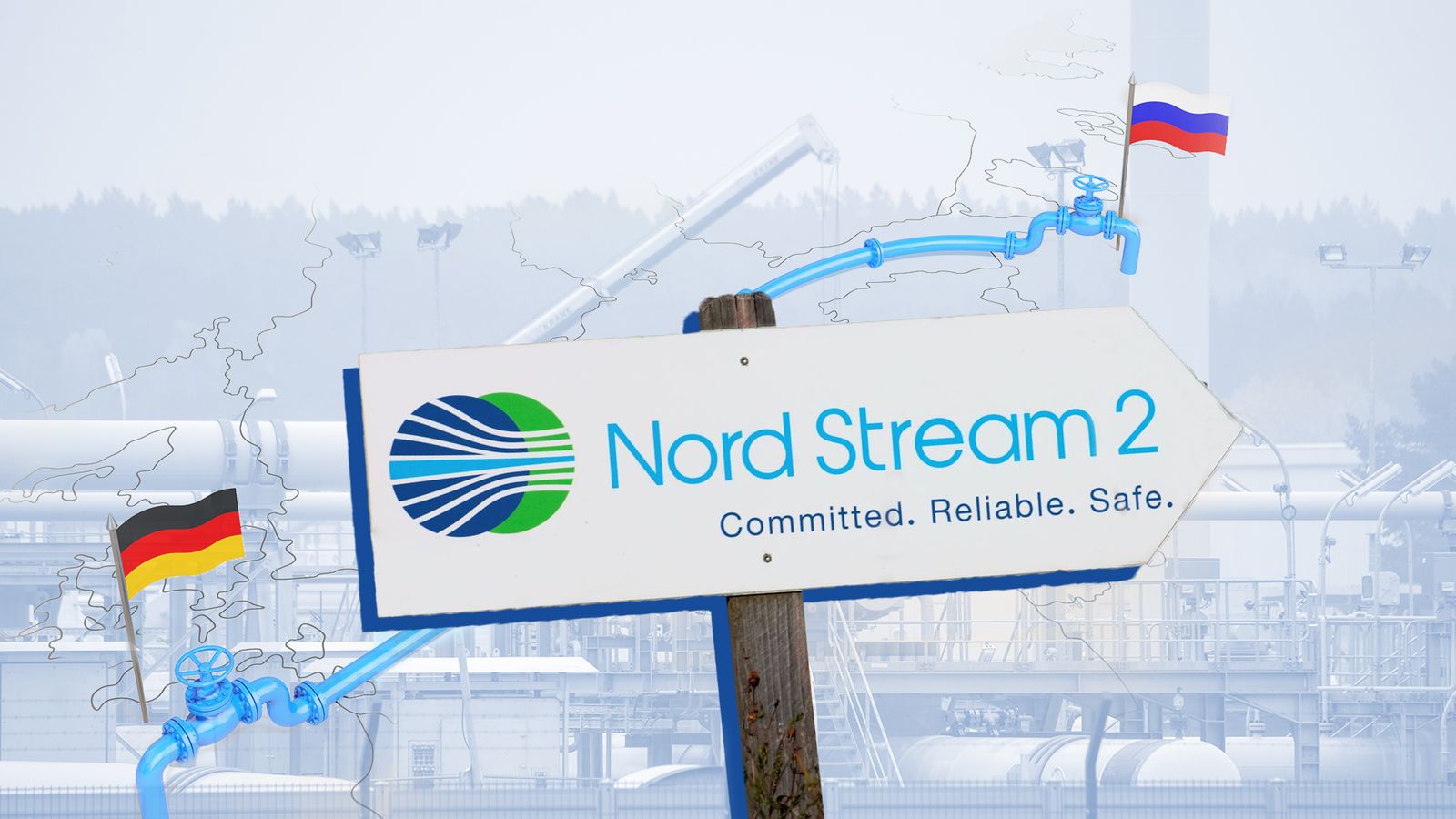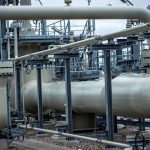Nord Stream 2 is a new gas pipeline which runs from Russia to Europe – but concerns about energy supplies are escalating amid Russian tensions with Ukraine.
We take a look at the pipeline, its role in the current tensions and how it continues to be a controversial project.
What is Nord Stream 2?
The export pipeline runs through the Baltic Sea, beginning near Narva Bay in the Ust-Luga area of the Kingisepp district in Russia‘s Leningrad region.
It makes landfall at Lubmin, a German town on the northern coast near Greifswald.
The $11bn (£8bn) project will contribute to the demand for gas in Europe, where imports are expected to grow.
The pipeline has been built but has not yet secured regulatory approval to allow it to go into operation.
COVID-19: WHO says it’s time for countries to have ‘healthy debate’ about mandatory vaccination
Europe’s COVID crisis: Are Christmas travel plans under threat?
Desperate people on a dangerous route: Why Lampedusa is a magnet for migrants
Germany’s energy regulator is not expected to make a decision on certifying the pipeline until the second half of 2022 at the earliest.
Along with the Nord Stream 1 pipeline, which opened in 2012, the project will increase Russia’s annual export capacity to 110 billion cubic metres – about half of what it sells to Europe every year.
The operator, Gazprom, is a state-controlled energy company with its headquarters in St Petersburg and says it sells more than half of its gas to Russian consumers and exports to more than 30 countries.
Why is the project controversial?
American officials had opposed the project, which allows Russia to directly export gas to Germany and potentially cut off other nations.
There are concerns it would give Russia too much power over European gas supplies – and there has been particularly strong opposition to the project in the US, Ukraine and Poland.
Taking its route through the Baltic Sea, it bypasses Ukraine which has traditionally been the main route for Russian gas.
More than a third of Europe’s gas requirements are already provided by Gazprom.
The US and Germany have committed to impose costs on Russia to prevent it from using the pipeline as a political weapon.
In 2019, a major contractor stopped working on the project after the US imposed sanctions on the firms involved.
Foreign Secretary Liz Truss has said she is very concerned about Europe’s dependence on Russian gas.
She has also said Nord Stream 2 should not go ahead if Russia attacks Ukraine.
What has been happening amid the escalating tension between Russia and Ukraine?
Concerns are rising in the European gas market about Russian supplies in the worst-case scenario of an attack that disrupts flows.
US President Joe Biden and other Western leaders have threatened economic sanctions on Russia if it attacks Ukraine.
Europe has already been dealing with lower-than-usual Russian gas flows for several months.
How is it different to other Russian gas export projects involving Europe?
Apart from the Nord Stream projects, there are two other lines which carry gas from Russia into the European market.
The Brotherhood pipeline goes through Ukraine.
The Yamal-Europe pipeline passes through Belarus and Poland.
Please use Chrome browser for a more accessible video player
What could go wrong?
Chancellor Olaf Scholz has indicated that Germany would be ready to discuss suspending the Nord Stream 2 project if Moscow attacked Ukraine.
Russia has said that both Europe and Russia will gain from Nord Stream 2 and that Germany should not “politicise” the project.
There are other gas options for some countries. For example, Germany, the biggest consumer of Russian gas, can also import from Norway, the Netherlands, Britain and Denmark via pipelines.
What’s going on at the Russia-Ukraine border?
But Norway, the second largest supplier to Europe, is delivering natural gas to Europe at maximum capacity and that can’t replace any missing supplies from Russia, its prime minister has said.
There have been several disputes between Russia and Ukraine in the past 15 years over gas, mostly to do with the price Ukraine paid for the fuel under contracts.
In 2006, Gazprom cut off supplies to Ukraine for one day. In the winter of 2008-9, Russian supply to Ukraine was disrupted due to disagreements over outstanding debts and prices, a situation that rippled across Europe.
In 2014, Russia cut off supplies to Kyiv amid the Russian annexation of Crimea.






















